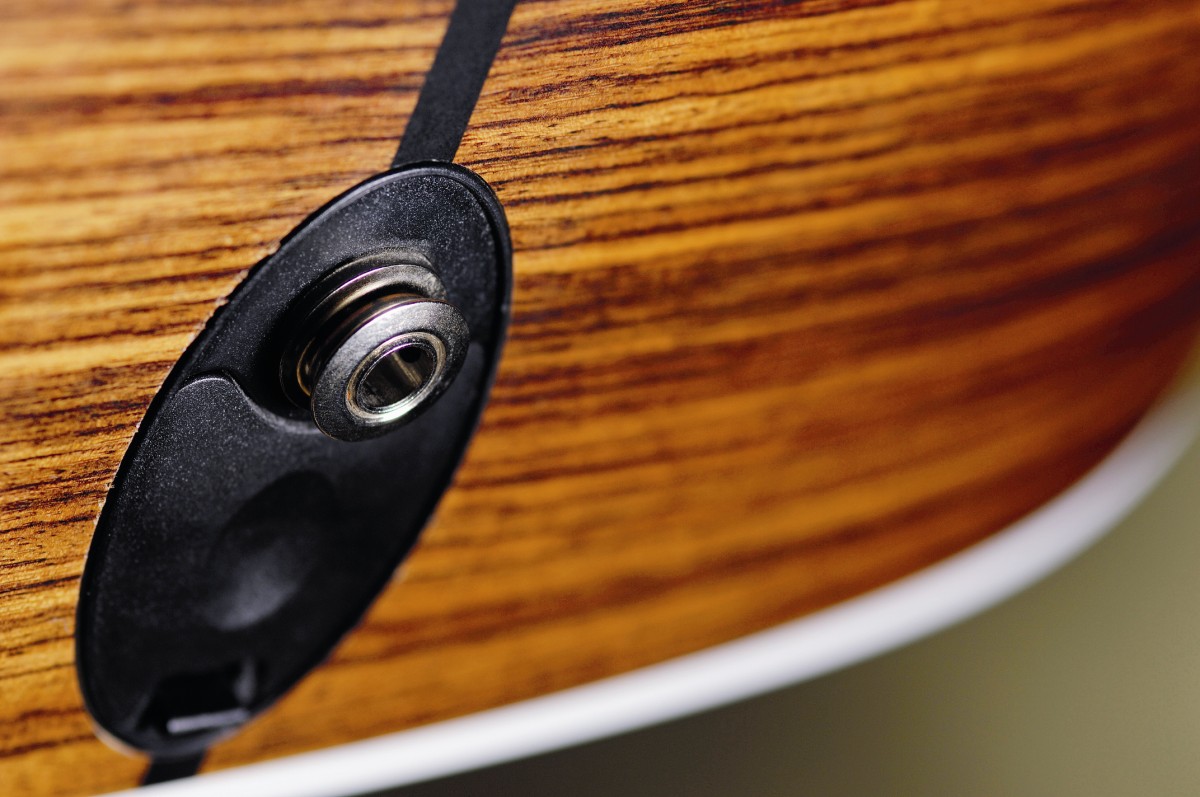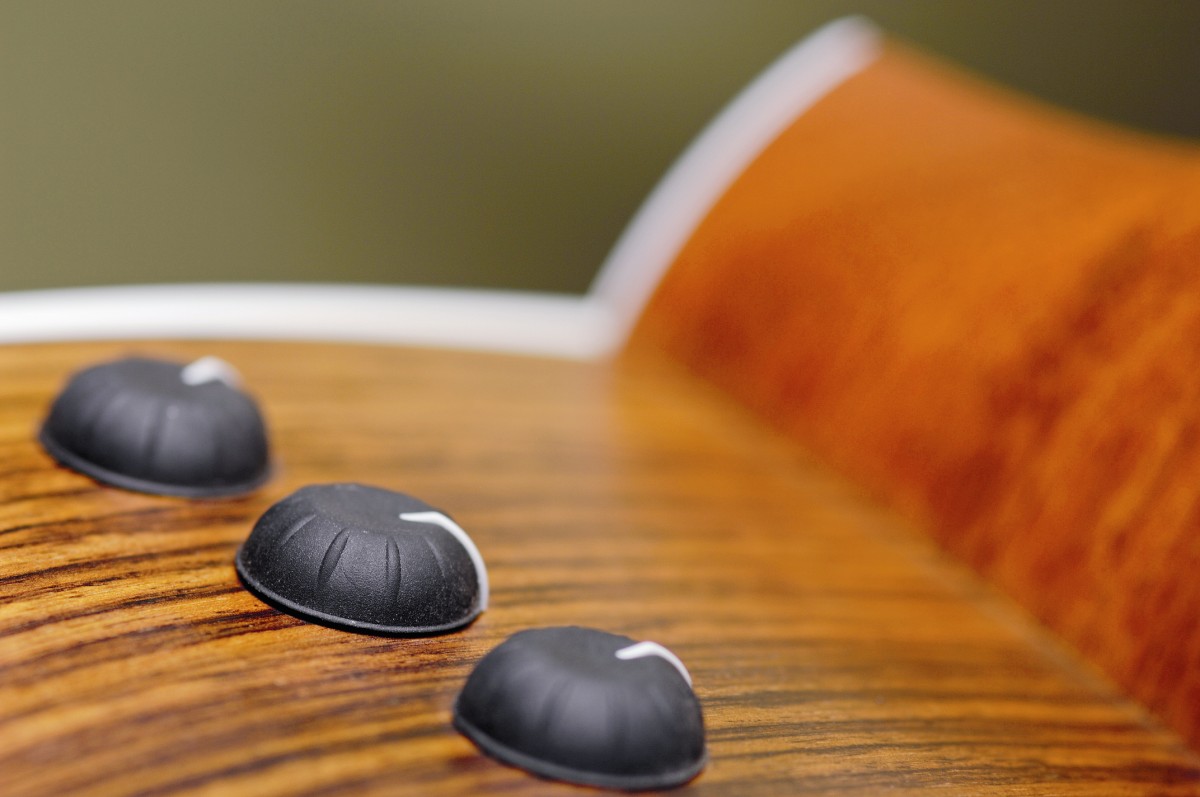MusicRadar Verdict
They play well and sound good. And when the guitars come at these new even more affordable prices, what more could you want?
Pros
- +
Excellent output balance.
Cons
- -
Can sound hard-edged without sympathetic outboard EQ'ing.
MusicRadar's got your back

The 210 E's neck has a finger-jointed headstock


Taylor's 200 Series was launched in late 2003, soon after the even less expensive 100 Series was unveiled. Aimed at combating increasingly stiff competition from the Far East and other North American brands, both occupied an important 'entry level' niche between the 15/16-size Big Baby dreadnought and the bottom of Taylor's mainstream catalogue, the 300 Series.
Initially, the 200 Series had just one model - the 214 grand auditorium - but this was subsequently joined by the 210 dreadnought plus Fishman Classic 4-powered electro versions of each.
Overview
Fast-forward to now and, alongside the company's recent restructuring of its higher-echelon acoustics, the 200 Series has had a makeover of its own.
Previously using solid sapele back and sides, the timber has been upgraded to rosewood but is now laminated. Is it a case of swings and roundabouts, then?
Yes, to an extent, but prices have been reduced by between £100 and £150 depending on model, and the instruments still include a hard case.
What's more, the finish of the solid sitka spruce top is now gloss rather than satin, and the electro variants now have ES Element electronics - an under-saddle version of Taylor's much-praised Expression System.
Though not the subject of this review, the simultaneously revamped all-satin solid spruce/laminated sapele 100 Series now carries the ES Element on its two electro models, and a grand auditorium has been added to hitherto dreadnought-only territory.
Want all the hottest music and gear news, reviews, deals, features and more, direct to your inbox? Sign up here.
Prices have come down here too. Another change to both series is that production has moved from Taylor's Californian factory to its secondary plant in Mexico, where the Baby and Big Baby are also made.
Aside from this dreadnought electro's different body style - which incidentally, has the same maximum lower-bout and rim dimensions as the 214 - its materials, cosmetics and finishing are virtually a ringer for the grand auditorium's, including the part-rosewood back and sides.
The only variance, is a darker staining along the back of the mahogany neck which, as on the 214 and all other full-size Taylors, now has a second strap button at the heel.
The neck, similarly near-identical in profile and feel, continues to have a finger-jointed headstock, this has been changed on the pricier acoustics to a scarf joint for reasons, says the company, of aesthetics and strength.
Taylor's cutaway electros are due for a similar change, so maybe the 100 and 200 Series will be too. Either way, it's a minor point.
Whereas Taylor's Expression System employs internal body sensors, the ES Element uses an under-saddle transducer with a separate element for each string.
The preamp's circuitry may well be different, but the user interface is the same as the original system's, comprising rubberised knobs on the shoulder for volume and active bass and treble, the latter two centre notched.
Underneath these, the preamp board includes a battery status LED and a micro switch for phase reverse which can be accessed with a poke of a pencil end, rather than having to loosen the strings to get your hand inside.
The system's square 9V battery is neatly housed in the endpin assembly, and pops out for quick and easy changes.
Sounds
Surprisingly perhaps, the 210E's sound doesn't come across quite as buoyant and supple as the grand auditorium's, and certainly isn't any louder acoustically.
If there is this hint of comparative compression, though, it's as much down to tonal texture as anything else. The midrange, as opposed to the 214's vaguely scooped tonality, is subtly warmer and more forward, giving the overall delivery a slightly thicker voicing.
Many will say this is appropriate to a dreadnought sound anyway, so no argument there really.
Fired up, the ES Element system does an impressively even-handed job, with an output across the strings that's balanced spot on.
Fidelity, clarity and punch are to a high standard too, though some may find the sound a little hard edged and insistently sparkling in the top end, to the extent of needing to roll off some backline treble to provide a more sympathetic range from the onboard EQ.
This, however, is a matter of personal taste, and if you like a lot of 'hi' in your 'fi', you'll probably love it.
They may be part-laminate instruments and lack some of the cosmetic adornments of their pricier peers, but these 200 Series are by no means second-rate Taylors.
The Mexican build quality looks to be as carefully worked as anything coming out of the Californian facility, attention to detail is up to the company's usual nigh-on faultless standard.